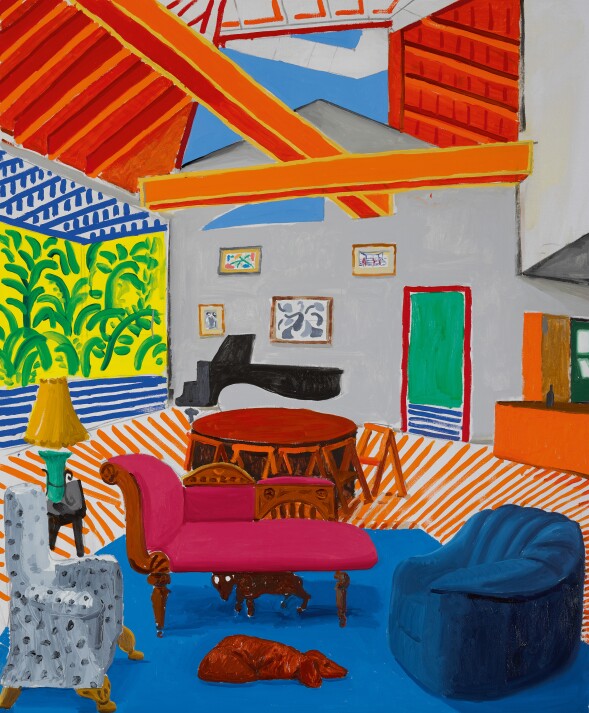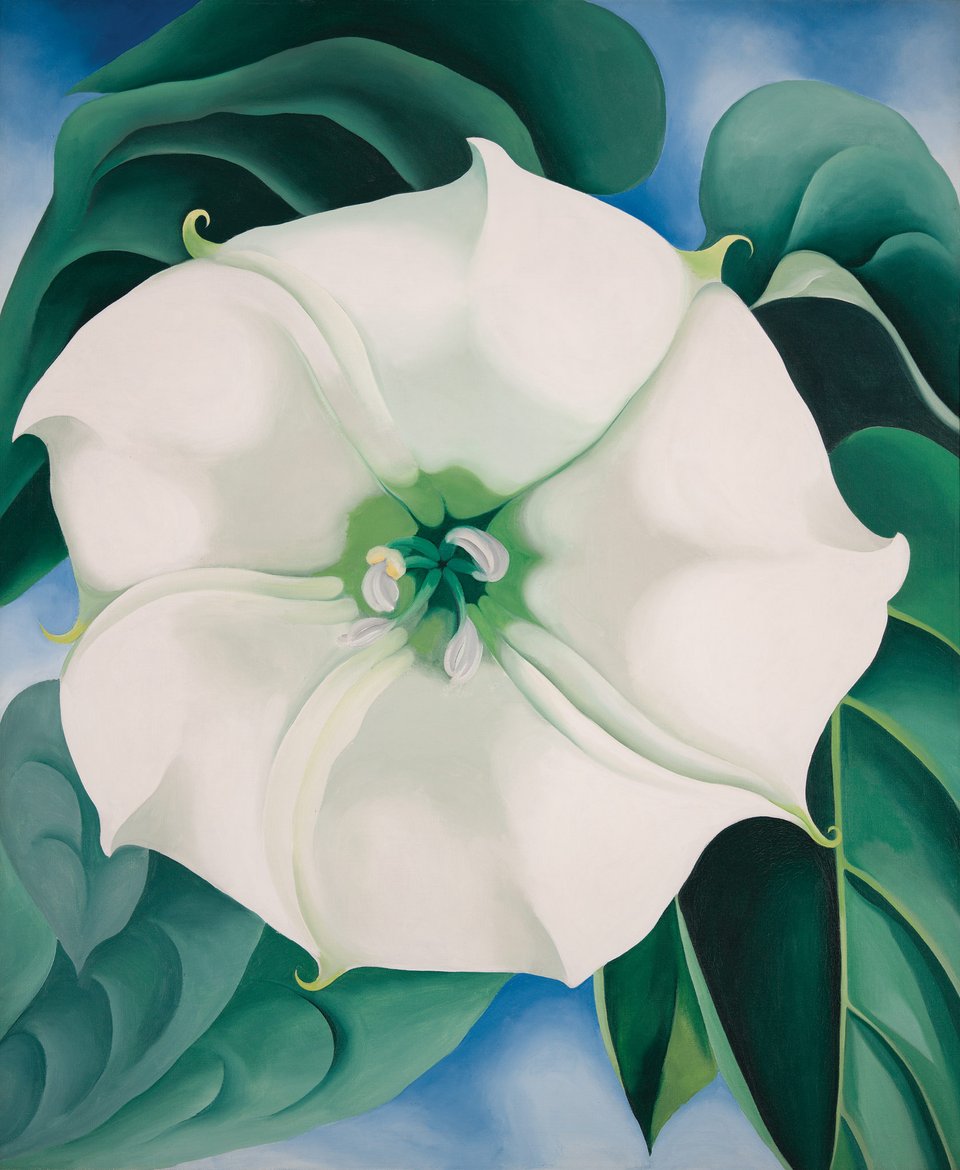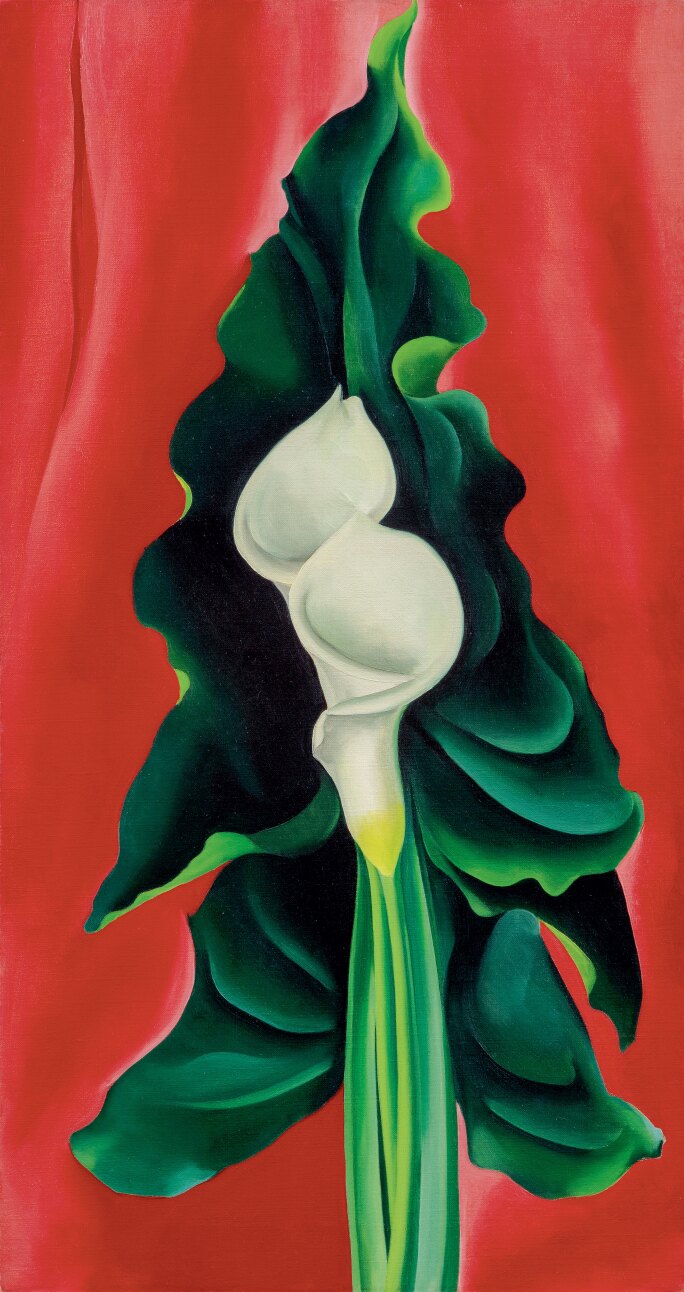
David Hockney’s large-scale painting Montcalm Interior with 2 Dogs from 1988, a highly regarded period within the artist’s career, will highlight their Contemporary Art Evening Auction in New York on 14 November 2018. The work comes to auction from the collection of legendary television producer and writer Steven Bochco, who acquired it in 1997, and appears at auction for the first time this fall with an estimate of $9/12 million.
Jacqueline Wachter, Sotheby's Vice President of Private Sales, Contemporary Art, said:
“We are thrilled to present this dynamic Los Angeles interior to collectors on the West Coast next week and to bring it to auction for the first time in November. Los Angeles has played a major role in Hockney’s life and work, and this painting is an excellent illustration of that relationship. This piece is also one of the greatest Hockney’s to be kept in a private California collection, out of public view for the last 20 years. It is a particular privilege to offer this painting from the collection of the late Steven Bochco – himself a legend of the entertainment industry and of the city of Los Angeles."
Lit with the bright glow of California sunshine, Montcalm Interior with 2 Dogs encapsulates Hockney’s evolution in the tradition of interior painting, while also displaying his unique interpretation of the genre. Painted in 1988 – the same year as his first, critically-acclaimed U.S. retrospective at the Los Angeles County Museum of Art – the canvas captures a room within Hockney’s Montcalm Avenue home in Los Angeles, which he purchased in the summer of 1979.
This home went on to inspire a number of the artist’s most iconic paintings of the late-1980s, including the sister painting to the present work,

Large Interior, Los Angeles, which has been held in the collection of The Metropolitan Museum of Art in New York since 1989. Montcalm Interior with 2 Dogs was featured prominently in the artist’s 1992-93 retrospective organized by Fundación Juan March, Madrid, which traveled to both the Palais des Beaux-Arts, Brussels and the Palau de la Virreina, Barcelona. The work has not been exhibited publicly since.
At once highly personalized and deeply rooted in art historical tradition, Montcalm Interior with 2 Dogs exemplifies Hockney’s ability to merge the painterly techniques of the past with his own distinctive, inventive, and remarkably intimate experience of reality. Painting with vivid brushstrokes and vibrant, raw colors that clearly evoke the post-Impressionist masters whom he greatly admired, Hockney flattens space to enhance the emotional and physical immediacy of the viewing experience. In this way, Montcalm Interior with 2 Dogs showcases the rich, saturated color application and deft handling of space that are characteristic of Hockney’s greatest paintings.
On 14 November, Sotheby’s will present works by O’Keeffe in a Contemporary Art Evening Auction for the first time: A Street from 1926, one of the most psychologically penetrating paintings from the artist’s rare and distinguished series of New York cityscapes (estimate $12–18 million), and Calla Lilies on Red from 1928, a vibrant depiction of the flower with which O’Keeffe would become synonymous (estimate $8–12 million).
Our American Art Auction on 16 November will feature Cottonwood Tree in Spring from 1943, which reveals the profound inspiration O’Keeffe gleaned from the American Southwest (estimate $1.5–2.5 million).
Robert A. Kret, Director of the Georgia O’Keeffe Museum, said:
“Museum leadership, with the endorsements of the donors and Board of Trustees, selected these works to de-accession after very careful and thoughtful consideration. Removing an artwork from the collection is never an easy thing for any museum to do, but it is an integral part of good collections management to continually build and refine our holdings.”
“A Street, Calla Lilies on Red, and Cottonwood Tree in Spring represent some of O’Keeffe’s most beloved subjects. They are bold, strong, wonderful paintings that epitomize everything that made Georgia O’Keeffe a master of American Modernism.”
Cody Hartley, Senior Director, Collections and Interpretation, Georgia O’Keeffe Museum
“Georgia O’Keeffe remains one of the most singular artistic voices of the last century – nothing looks like an O’Keeffe – and the diversity of this particular group of paintings touches upon the breadth and depth of her iconic career. Her images are not only an essential part of American culture, but are now appreciated on an international stage among the great works of her time. We are thrilled to present these superb paintings in a new and wider context this November, sparking dialogues between O’Keeffe’s work and that of artists spanning the 20th and 21st centuries. It is a great privilege for Sotheby’s to work with the Georgia O’Keeffe Museum again this fall.”

In May 2014, Sotheby’s sold Georgia O’Keeffe’s iconic flower painting Jimson Weed/White Flower No. 1 to benefit the Georgia O’Keeffe Museum’s Acquisitions Fund. The painting achieved a remarkable $44.4 million, setting a world auction record for any work by a female artist that still stands today. Jimson Weed/White Flower No. 1 now resides in the collection of Crystal Bridges Museum of American Art in Bentonville, Arkansas, and was the star of the blockbuster retrospective Georgia O’Keeffe at the Tate Modern and Art Gallery of Ontario in 2016–17.
Painted In 1926, A Street is one of the most physically imposing and psychologically penetrating works from the distinguished series of New York cityscapes that Georgia O’Keeffe created between 1925 and 1929. Critics now regard this small but powerful series of some 20 works as standing among the most satisfying, painterly, and memorable of her career. The cityscapes stand as both a personal and universal expression of the ambivalence of urban existence – the simultaneous glorification and condemnation of the overwhelming human and mechanical energy of a city.
When O’Keeffe began her cityscapes, Stieglitz cautioned her against what he considered a man’s topic. They stood in stark contrast to O’Keeffe’s sinuous abstractions and flowers, and represented a bold challenge to her male contemporaries and critics. The series served as inspiration for Joan Mitchell’s rebellious cityscapes from the early 1950s – among others – which similarly revolt against the stereotypical hyper-masculinity of Abstract Expressionism.
Between 1918 and 1932, Georgia O’Keeffe created more than 200 flower paintings. But it was arguably in the calla lily that the artist found her ideal motif, one that provided the perfect synthesis of subject and form that now defines her most celebrated work.
O’Keeffe painted Calla Lilies on Red in 1928. She would ultimately depict the calla lily eight times in this period, both in oil and pastel, revisiting the blossom on each occasion with a new viewpoint or altered perspective. In the present work, she emphasizes the verticality of the flower’s delicate form by presenting an elongated picture plane with its sensuous petals at center. She utilizes vibrant hues of red and green, which contrast dramatically the white flower, to imbue the canvas with energy and vitality, and emphasizes the simple elegance of the flower’s curves by reducing extraneous details.

Georgia O'Keeffe, Cottonwood Tree in Spring, 1943. Estimate $1,500,000–2,500,000.
Works such as Cottonwood Tree in Spring reveal the profound inspiration O’Keeffe gleaned from the American Southwest. The sublime beauty of the landscape provided a free range for her imagination, and she would continue to investigate its imagery for the remainder of her life, returning almost every summer until 1949 when she made Abiquiu her permanent home. While the artist had always utilized the natural world as the basis for her unique visual language, in New Mexico her art gained an even deeper intimacy and, in works such as Cottonwood Tree in Spring, it transcends a literal study of nature to evoke the spiritual connection she felt with her adopted home.

